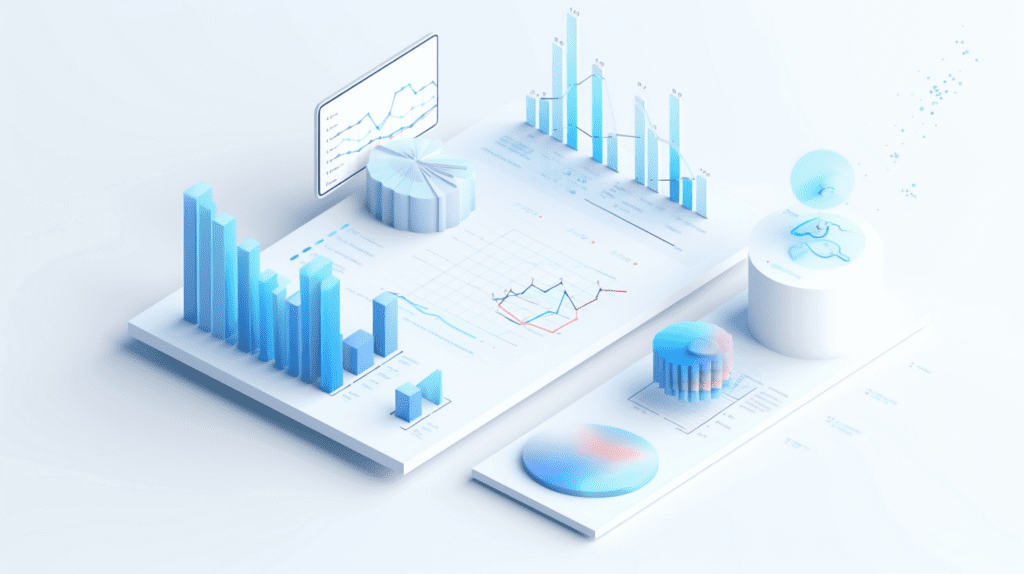Unlocking Data-Driven Decisions: The Power of Microsoft's Power BI - Part 2

Part 2
Mastering Power BI: Essential Best Practices for Optimal Data Insight and Efficiency
Power BI Best Practices
Maximizing the benefits of Power BI requires the following best practices:
Designing Visually Appealing and Effective Dashboards
When designing dashboards in Power BI, it is essential to create a visually appealing and user-friendly interface. Use a combination of appropriate colors, fonts, and visual elements to make the dashboard visually engaging.
Optimizing Data Connections and Refreshing Schedules
Efficient data connections and refreshing schedules are crucial to maintaining accurate and up-to-date analysis in Power BI. Optimize data connections by using direct connections or refreshing mechanisms that suit your specific requirements.
Implementing Security Measures for Data Privacy
As with any data analysis tool, data privacy and security are of paramount importance when using Power BI services. Implement security measures such as row-level security and data encryption to protect sensitive information.
Ensuring Data Accuracy and Reliability
Data accuracy and reliability are critical for effective decision-making. Maintain data integrity by continuously validating the data sources and performing regular data quality checks.
Advanced Power BI Features
Unlock the full potential of Power BI with advanced features:
Power Query for Data Transformation and Cleansing
Power Query is a powerful tool within Power BI that enables users to transform and clean data from various sources. Its intuitive interface allows users to manipulate and shape data, removing duplicates, reshaping data structures, and handling missing values.
Power Pivot for Advanced Data Modeling
Power Pivot, another essential feature of Power BI, allows users to build complex data models for in-depth analysis. By creating relationships between tables, users can perform advanced calculations and aggregations on large datasets.
DAX Formulas for Complex Calculations and Measures
The Data Analysis Expressions (DAX) language is the backbone of Power BI’s calculation engine. With DAX formulas, users can perform complex calculations and create measures to analyze data based on specific criteria.
Power Automate Integration for Workflow Automation
Power Automate, formerly known as Microsoft Flow, allows users to automate workflows and integrate Power BI with other applications and services. This integration streamlines processes and ensures that the right information reaches the right people at the right time.
Power BI for Business Intelligence
Power BI fosters a data-driven culture, empowering employees to access and interpret insights independently.
Enabling Data-Driven Decision-Making Across Organizations
Power BI plays a crucial role in enabling data-driven decision-making across organizations. By providing a centralized platform for data analysis and visualization, Power BI empowers employees at all levels to access and interpret insights from their data.
Empowering Business Analysts and Managers
Power BI empowers business analysts and managers by equipping them with tools and capabilities to analyze data independently. Business analysts can leverage Power BI’s intuitive interface and extensive visualization options to create compelling reports and dashboards, reducing the reliance on IT departments. Managers can gain real-time insights into key performance metrics, enabling them to make proactive decisions.
Realizing Cost and Time Savings Through Efficient Analysis
The use of Power BI can lead to significant cost and time savings for organizations. By streamlining the data analysis process and eliminating manual reporting tasks, Power BI enables employees to focus on analyzing insights and making informed decisions.
Overcoming Common Challenges with Power BI
Addressing challenges to maximize the benefits of Power BI:
Dealing with Large Datasets and Performance Issues
When working with large datasets, Power BI performance may be affected. To overcome this challenge, users can employ techniques such as data compression, partitioning, and using summary tables.
Troubleshooting Data Refresh Failures
Data refresh failures can occur due to various reasons, such as connectivity issues or changes in data sources. To troubleshoot such failures, users should review the refresh history, check data source credentials, and ensure that the data source is accessible. Users can also set up alerts for refresh failures to promptly address any issues that arise.
Managing Data Security and Access Control
Maintaining data security and access control is crucial when using Power BI. To overcome this challenge, organizations should implement robust security measures, such as role-level security and data encryption. Regularly reviewing and updating security policies and providing training to employees on data privacy best practices ensures data remains secure and protected.
What Is Its Future?
Expect exciting developments:
- Enhanced Data Connectivity: Microsoft has consistently expanded Power BI’s data connectivity options. Future developments may involve support for even more data sources, both on-premises and in the cloud.
- Augmented Analytics: Power BI may incorporate augmented analytics features, where machine learning algorithms work in the background to provide recommendations and insights as users interact with their data.
- Improved Collaboration: Collaboration features are likely to improve, making it even easier for teams to work together on reports and dashboards in real-time.
- Data Security and Compliance: With increasing data privacy regulations, Power BI will continue to invest in robust security and compliance features to ensure that users can confidently handle sensitive data.
- Advanced Storytelling: Power BI may improve its storytelling capabilities, enabling users to create more compelling narratives within their reports and dashboards.
Conclusion
In conclusion, mastering Power BI’s best practices and advanced features is pivotal for organizations aiming to extract maximum value from their data analytics efforts. By adhering to principles such as designing visually appealing dashboards, ensuring data accuracy, and leveraging advanced functionalities like Power Query and DAX formulas, businesses can elevate their data-driven decision-making processes to new heights. Embrace these best practices to unleash the full potential of Power BI and stay ahead of the curve in today’s rapidly evolving business landscape. For more information about Power BI best practices or how to implement them in your company, contact us.
